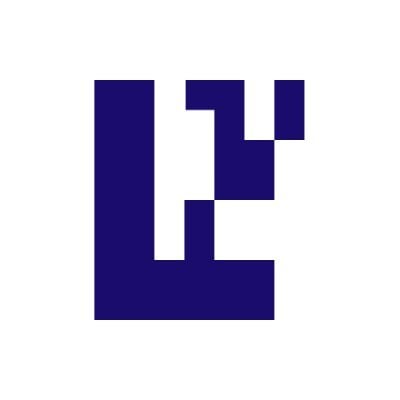Comprehensive comparison of the four major DA layers: Avail, Celestia, Ethereum, EigenDA
Written by: Avail Team
Compiled by: Modular 101
What are the differences between different layers of data availability? In this article, we will explore the advantages and disadvantages of various approaches.
In recent years, Layer 2 has begun to gain attention due to the growing focus on scaling execution. Meanwhile, an increasing number of participants are facing growth challenges due to limited block space and high costs. They are starting to realize that a scalable data availability layer is crucial for effectively scaling blockchain. This also means they need a foundational technology layer that can save costs and provide larger block space to support various types of rollups.
Avail and several other teams are building scalable data availability solutions from scratch, while other teams, such as Ethereum, are trying to increase the data availability capacity of existing blockchains. Regardless of the approach taken, there is a fact — the foundational layer developers choose today will determine their competitive advantage in the coming years.
Avail is a part of the rapidly evolving modular ecosystem aimed at improving data availability for blockchains. In addition to Avail, there are other data availability (DA) solutions like Celestia and EigenDA, which are also working towards the same goal. Various solutions are adopting different strategies and technical paths to achieve blockchain scalability. For example, Ethereum is currently adopting a technology called Proto-Danksharding, also known as EIP-4844. This technology is a step towards Ethereum's long-term goal — complete Danksharding technology.
This article will evaluate the advantages and disadvantages of each approach. We will highlight different design choices to provide a comprehensive understanding and help developers find the most suitable DA layer for them.
Let’s start with an overview and then delve into each category:

Network Security
When considering the foundational layer, the security and resilience of the network are the primary concerns. Here are the key factors to check when assessing network strength.
Consensus Mechanism
In consensus mechanisms, there is a fundamental dilemma between liveness and security. Liveness ensures that transactions are processed quickly and the network remains operational, while security guarantees that transactions are accurate and safe. Different blockchain systems make different choices for their unique use cases to achieve an appropriate balance.
Avail uses two consensus mechanisms from the Polkadot SDK: BABE and GRANDPA. BABE is primarily used for block generation. To ensure network liveness, it coordinates with validating nodes to determine which node will become the new block producer. GRANDPA is mainly responsible for the final confirmation of blocks. When more than two-thirds of validators confirm that a chain contains a specific block, GRANDPA allows the confirmation of all previous blocks up to that specific block. By combining these two mechanisms, Avail forms a hybrid ledger that enhances the resilience of its network, allowing it to operate normally even in cases of temporary network partitions or significant node failures.
Avail's design choices are similar to those used in Ethereum with Casper and LMD GHOST. LMD GHOST is Ethereum's block production engine, relying on probabilistic finality like BABE, while Casper FFG, like GRANDPA, is a finality mechanism that provides finality guarantees.
Celestia uses Tendermint's design choices, allowing them to determine block availability at generation. However, the trade-off of such a choice is that when more than one-third of operators or validators go offline, there is a risk that the chain may be halted. It is also important to note that the finality of blocks does not guarantee data availability. Celestia adopts a fraud-proof-based design. In this design, even if a block has rapidly achieved finality (i.e., has been confirmed and will not be changed), users still need to wait until they are sure that the relevant data is available.
Data Availability Committees (DAC) are groups responsible for ensuring data accessibility or verifying data availability. When they confirm that data is available, they use specific cryptographic signatures to indicate this confirmation. This means that when a majority of committee members agree that certain data is available, they adopt a special digital signature to prove this fact.
EigenDA is such a DAC that does not store data directly on Ethereum's main chain, hence it is referred to as an "off-chain" DAC. Validators in the Ethereum network have the option to join EigenDA. When DAC members confirm the availability of certain data, they provide a proof or statement based on smart contracts. This proof indicates that they have verified the authenticity or integrity of the data. Additionally, to ensure the order or structure of the data, DAC members rely on an external, independent service to sort or organize the data.
Decentralization
When considering network security, two key factors need to be taken into account: the total amount of staked assets and the distribution of those stakes. The degree of decentralization, or how evenly the staked amounts are distributed, directly affects the security of a network. The cost of potential attacks is used to assess the security of the network. This is because if the staked amounts are evenly distributed across a larger set of validators, an attacker attempting to compromise the network would need to persuade more nodes to achieve the same amount of stake.
Avail inherits the Nominated Proof of Stake (NPoS) from Polkadot, allowing it to support up to 1,000 validators. Due to its adoption of a sequential Phragmén method, a multi-winner election method, NPoS has effective reward distribution that can reduce the risk of staking centralization.
Avail is unique among all data availability solutions because it has the ability to sample data from its lightweight client P2P network, rather than relying entirely on full nodes to retrieve data when issues or bottlenecks occur in the network, as other systems do. This feature distinguishes Avail from other existing and upcoming data availability solutions. With this capability, Avail provides an efficient and reliable backup mechanism that ensures data availability even in the event of failures. This further enhances the stability and resilience of Avail's data availability network.

Celestia adopts Tendermint as its consensus protocol, with a validator set of up to several hundred.
In contrast, Ethereum, as a single blockchain, boasts over 900,000 validator nodes as a gold standard for security, but the degree of distribution in the network is not fully reflected in this number.
In comparison, DACs typically include only a few nodes responsible for confirming the availability of blockchain data.
It is important to note that the re-staking process does not rely on the security obtained from Ethereum; its security primarily depends on the total amount of Ether staked that is re-staked on that platform. This means that re-staking itself does not directly help improve the security of the platform; it merely utilizes a portion of the existing stake locked on Ethereum.
EigenDA relies on its full node aggregated signatures. However, its verification statements through smart contracts cannot provide the same level of data availability (DA) guarantees compared to data availability sampling. EigenLayer employs a re-staking strategy, using funds or assets already locked on Ethereum for staking to support its own network. However, this approach has faced criticism as it may lead to the reuse of certain validators and overload the consensus mechanism.
Additional Consumption of Execution Environment
In the past decade, single blockchains with smart contract capabilities have introduced groundbreaking innovations. However, even cutting-edge technologies of this era, such as Ethereum, which combines data availability, execution, and settlement, have significant scalability limitations. These limitations have prompted the rise of Layer 2 technologies, shifting execution off-chain and facilitating the development of improvement proposals like EIP-4844 (also known as Proto-danksharding and Danksharding).
Holy smart contracts define state and serve as a bridge to rollups. In this approach, Ethereum acts as the authority and standard for validating the accuracy of rollups.
Avail separates execution and settlement from the foundational layer, allowing rollups to publish data directly to Avail. The advantage of this modular approach is that rollups based on Avail can leverage Avail's P2P lightweight client network to easily verify their state. Furthermore, if this network is used to relay execution proofs, rollups have the capability to upgrade independently without relying on smart contracts or the foundational layer to define their state. This provides rollups with greater flexibility and autonomy. This new approach offers developers a foundational layer that can scale according to demand, giving them the option to bridge to any supported execution layer for settlement.
Celestia adopts a similar approach to Avail. The only difference is that its lightweight clients cannot support the network when full nodes go down.
EigenDA also does not have a fixed settlement layer.
Development Potential
In addition to the security and resilience of the data availability (DA) layer, the ability to accommodate the increasing demand for rollups and blockchains built on top of it is crucial for their success. Let’s look at some key factors to consider.
Validity Proofs
When discussing validity proofs, it is crucial to understand the trade-offs between fraud proofs and validity proofs in data availability layers. The KZG commitment used by Avail is a validity proof designed to ensure DA, reducing memory, bandwidth, and storage requirements while providing succinctness, meaning the proof size is fixed and not affected by polynomial complexity. This makes KZG commitments an ideal choice for zero-knowledge-based blockchains, where efficiency, privacy, and scalability are important.
Additionally, Avail's lightweight clients can quickly access and sample data, ensuring correct block encoding and providing data availability guarantees when new blocks are finalized, whereas fraud proofs require waiting for the challenge period to end. The combination of KZG commitments and Avail's lightweight clients accelerates the verification process on Avail, allowing rollups or sovereign chains built on it to leverage its rapid verification process and create scalability and flexibility for blockchain designs in the coming years. This verification method is a key factor that distinguishes Avail from DA layers like Celestia.
Celestia uses secure hash functions, which are much faster than generating KZG commitments. The trade-off here is that they must rely on fraud proofs to confirm the accuracy of erasure coding, which introduces potential delays in ensuring data availability guarantees.
Celestia's lightweight nodes cannot explicitly confirm whether data is available or if there are outstanding fraud proofs that have not yet been received. In other words, the use of fraud proofs reduces the ability of the network's lightweight nodes to explicitly confirm data availability after sampling, as part of optimistic verification requires a necessary challenge period.
EigenDA will use KZG commitments and only download a small amount of data instead of the entire data block, employing validity proofs. Their approach is to use erasure coding to split data into smaller chunks and require operators to only download and store a chunk that is part of the full data block size.
As for Ethereum, while the current version does not use validity proofs, EIP-4844 and complete Danksharding will adopt validity proofs upon implementation.
Scalability Capability
Due to limitations on Ethereum, such as expensive costs and slow transactions, there has been a surge in Layer 2 solutions. They have become the execution layer for Ethereum, driving increased demand for block space. Currently, the cost of publishing data to Ethereum is estimated to account for 70% to 90% of the total costs of rollups. This adds extra costs for validators and applications developed on Ethereum.
Foundational layers like Avail and Celestia aim to address this issue. They are optimized for data availability and have the capability to dynamically scale block sizes as demand increases. By combining lightweight clients and data availability sampling (DAS), they have the advantage of scaling data availability block sizes in response to increasing network demands. This means that as block space increases, applications built on top of them remain unaffected, as lightweight clients within these networks can perform DAS without needing to download the entire block. This unique capability distinguishes them from single blockchains.
As of September 2023, Ethereum has the largest community, with a market cap of $191 billion. While protocols built on Ethereum enjoy economies of scale, they also face high transaction costs due to limited block space in recent years. With the growth of rollups, both user numbers and transaction volumes have peaked, making rollups the preferred choice for execution. As blockchain technology becomes more widespread, the demand for block space will only continue to grow.
While DACs can scale due to their simple centralized approach, some rollups have used DACs as a temporary measure until they design a decentralized DA solution.

Data Availability Sampling
Both Avail and Celestia support lightweight clients with data availability sampling (DAS), allowing lightweight clients to provide minimal trust security. As mentioned earlier, the main difference lies in how verification is conducted and how Avail's lightweight client P2P network can replace full nodes to support the network in cases of interruptions or bottlenecks.
In contrast, Ethereum post-EIP-4844 will not be equipped with DAS. This means its lightweight clients will lack this upgraded, minimal trust security feature. Furthermore, Ethereum's DA solution includes its smart contract environment. In complete danksharding, DAS will be implemented to expand blob space, which is expected to be realized in the coming years.
EigenDA's security relies on trusting a few full nodes or other entities, as it does not have data availability sampling (DAS). The integrity of the protocol depends on an absolute majority of honesty within the committee and at least one entity having a copy of the data, similar to optimistic constructions. Although the dual supermajority method improves security compared to a single supermajority, it still does not reach the ideal situation of independent verification through DAS.
Costs
Compared to congestion and demand, Ethereum is the most expensive solution. Even with EIP-4844, Ethereum will still be costly as it only provides a one-time increase in block space. DACs are the cheapest, but this comes at the cost of adopting a more centralized approach.
Without an execution layer, Avail and Celestia will be able to maintain low costs. They can also easily increase block space, which today’s Ethereum cannot do without DAS.
As for EigenDA, it claims to introduce a flexible cost model with both variable and fixed fees, but its actual costs have not yet been disclosed.
Performance Highlights
Now that we have examined growth potential, let’s look at the performance of these blockchains.

Block Time
Refer to the table above to see the time required to build each block.
Measuring blockchain performance solely by the time required to build blocks is one-dimensional, as this metric only involves one aspect of the process from block confirmation to verification completion. Even with a consensus mechanism that provides instant finality, DA verification may take time when using fraud-proof-based methods.
Ethereum uses Casper to finalize a block every 64-95 slots, meaning the finality of Ethereum blocks is approximately 12-15 minutes.
EigenLayer is not a blockchain but a set of smart contracts running on Ethereum. This means it inherits the same finality time as Ethereum. So, if a user sends a transaction to a rollup, the rollup will need to forward the transaction data to EigenLayer to prove that the data is available. However, the transaction will only be considered complete when the Ethereum block is finalized, even if the rollup has accepted the transaction, leading to delays. Methods to provide faster DA guarantees with cryptoeconomic measures are already under discussion.
Block Space
As rollups become the future execution layer, the demand for block space will only increase. DA layers like Avail and Celestia will be able to meet this demand due to their modular design, while Ethereum's block space growth will be limited. Avail's Kate testnet has configured block sizes to 2MB, which is replicated and erasure coded to 4MB. Avail's uniqueness lies in its ability to increase block size using efficient client verification technology. Through internal benchmarking, Avail has tested block sizes of up to 128MB without difficulty.
Celestia can also increase block sizes as demand for block space grows, thanks to DAS.
EigenDA will scale throughput by decoupling DA and consensus, erasure coding, and direct unicast. However, this comes at the cost of rollups built on top not inheriting the censorship resistance of the foundational layer.
Conclusion
Choosing a solid foundational layer to build on can be challenging. We hope this article helps readers better understand the pros and cons of different design choices and choose the DA layer that suits them best.












